- Home
- Logifleet Blog
- How Telematics Helps Manage the Transition to Electric Fleets
How Telematics Helps Manage the Transition to Electric Fleets

The push for green solutions is growing. Fuel prices are going up. New rules on emissions are getting stricter. Many companies are turning to electric vehicles (EVs) for their fleets.
But switching from regular fuel vehicles (ICE or Internal Combustion Engine vehicles) to EVs is not easy. It is more than just replacing one vehicle with another.
Fleet managers face many challenges like:
- EVs have limited range.
- Charging takes planning.
- The total cost of ownership (TCO) can be hard to understand.
This is where telematics plays a big role. It shows real-time data like battery level, energy use, and driving habits. With this data, companies can plan the best routes and know when to charge. They can see which EVs are working well and which need attention. Telematics helps cut costs, avoid downtime, and make the switch to electric vehicles smooth and smart.
In this article we will explore:
- Why companies are moving to electric fleets?
- Why moving to EVs can be challenging?
- How telematics helps with range, charging, and cost?
- How data can guide a smart EV plan?
- The real benefits of electric vehicles telematics for fleets and how Logifleet can help you get started today?
Why Companies Are Moving to Electric Fleets

More and more companies want to go green. They need to cut pollution and follow new clean air rules. Many governments now give tax breaks or money back for buying electric vehicles (EVs). This makes switching to EVs easier and less expensive.
In Switzerland, electric trucks also save on road taxes. They do not pay the LSVA heavy vehicle fee until 2029, and even after that, there will be discounts until 2035. For many fleets, this adds up to big savings each year.
Going electric is also good for a company’s image. It shows they care about the planet and want to help the environment. Customers like to support businesses that take action and choose cleaner ways to work.
EVs also save money in daily use. Charging an EV costs less than filling a tank with fuel. Because EVs have fewer moving parts, they need less fixing and fewer oil changes. This means lower repair costs and more time on the road making deliveries or doing jobs.
EVs have many benefits, but switching from fuel vehicles to electric fleets is not easy. Fleet managers face new challenges like range limits, charging schedules, and understanding costs.
Why Moving to EVs Can Be Challenging
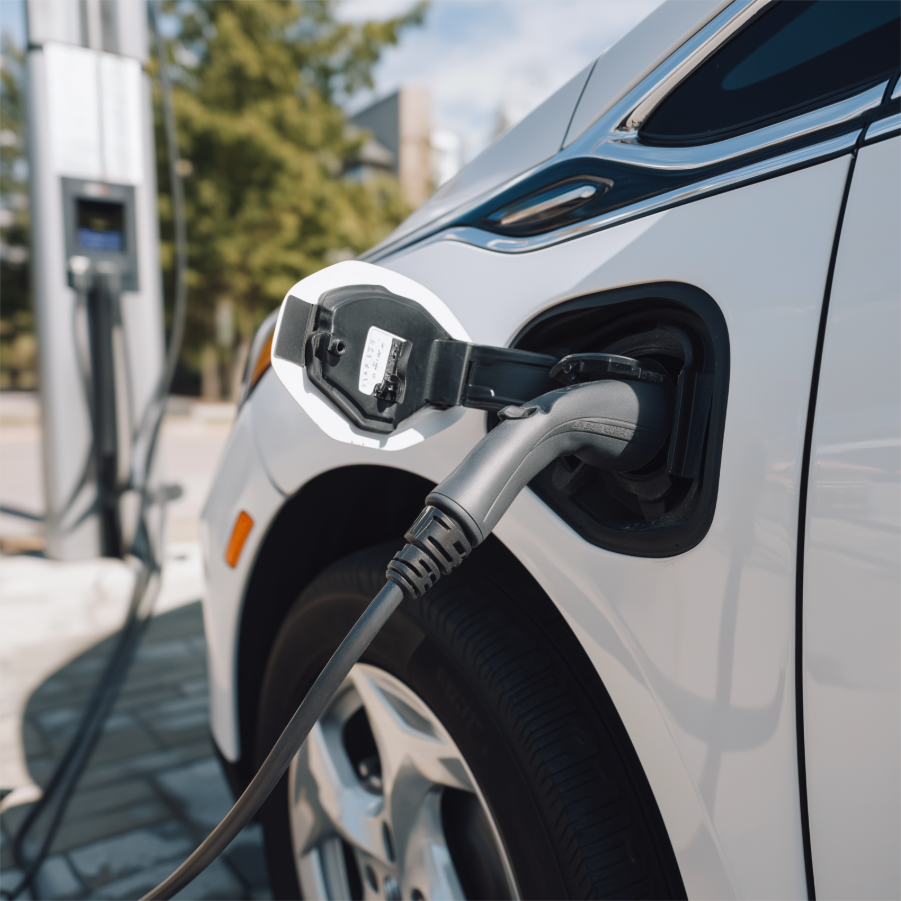
EVs are not just plug-and-play replacements for fuel vehicles. They work in a different way and need new planning. Fleet managers must think about things they never had to before, like range, charging, and costs. These new challenges can make the switch harder if there is no clear plan. Let’s look at the main ones.
Range limits: EVs cannot always drive as far as fuel vehicles on one charge. Fleet managers need to make sure the battery will last for all trips.
Charging time: Fueling a truck or car takes minutes. Charging an EV can take hours if there are no fast chargers nearby. Companies need to plan when and where to charge.
Charging stations: Not every area has enough charging spots. This can be a problem for fleets that travel long routes.
Cost questions: EVs can be expensive to buy. Managers also need to track costs like charging and battery care to see if they are saving money in the long run.
New technology: Drivers and staff must learn how to handle EVs and charging systems. This means training and adapting to new ways of working.
Switching to EVs can feel overwhelming with so many new challenges. But with the right tools, companies can manage this change more easily. This is where telematics comes in.
How Telematics Helps with These Challenges
Telematics is like a smart assistant for your fleet. It collects real-time data from each vehicle and turns it into clear information. This helps managers plan better, save money, and avoid problems with electric vehicles.
- Tracking range and battery
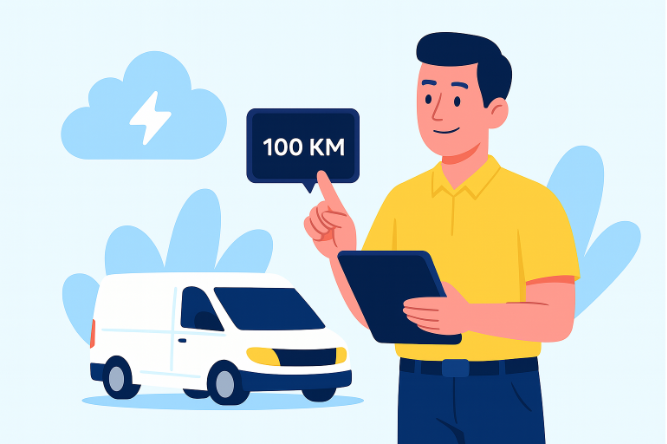
One of the biggest fears with EVs is running out of charge. Telematics shows the exact battery level of every vehicle and the estimated range based on driving style, weather, and terrain. Managers can see if a vehicle can finish its route or needs a charging stop. This prevents delays and keeps drivers safe.
- Charging plans
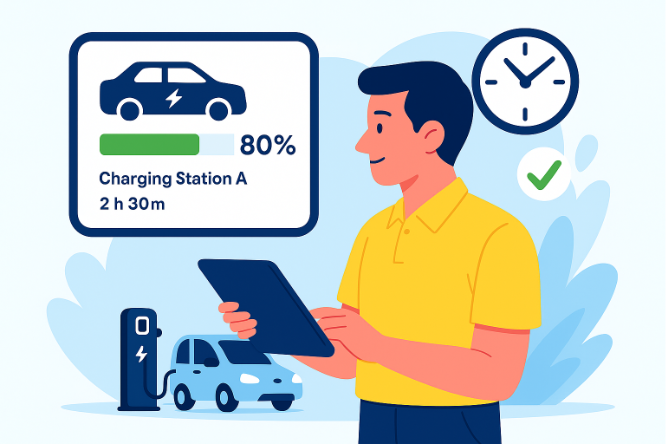
Charging an EV is not like filling a tank. It takes time and can be expensive during peak hours. Telematics helps plan charging schedules so vehicles are ready when needed. It also shows which charging stations are available, how long charging will take, and suggests off-peak times to save money.
- Finding the best routes
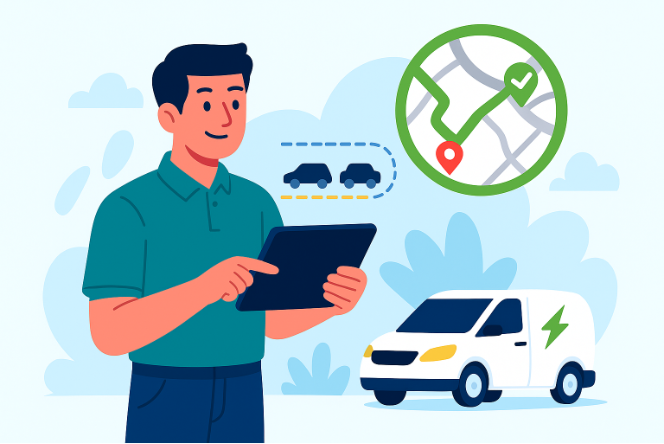
EV batteries drain faster with long routes, heavy traffic, or lots of stops. Telematics collects data about road conditions and traffic patterns. It then suggests routes that use less energy and avoid unnecessary miles. Over time, it learns which routes are most efficient for each vehicle.
- Cost control
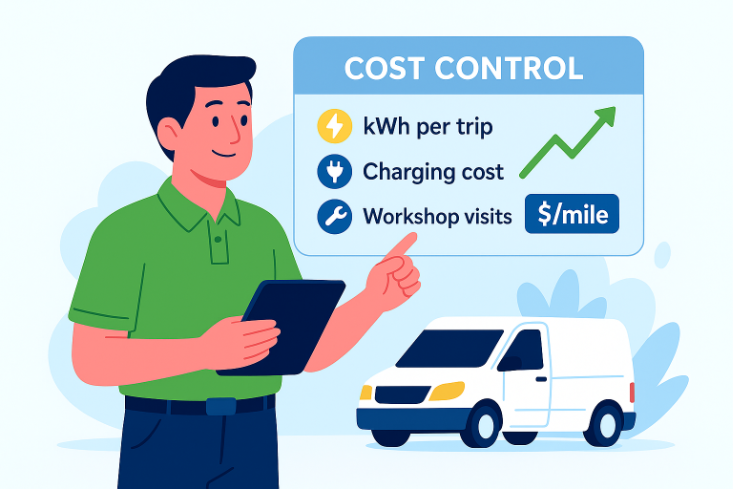
With telematics, managers can track energy use per trip, charging costs, and even how often each EV is in the workshop. This makes it easier to compare the real costs of EVs versus fuel vehicles. Companies can see the total cost per mile and find new ways to save, like reducing idle time or improving route planning.
- Driver habits
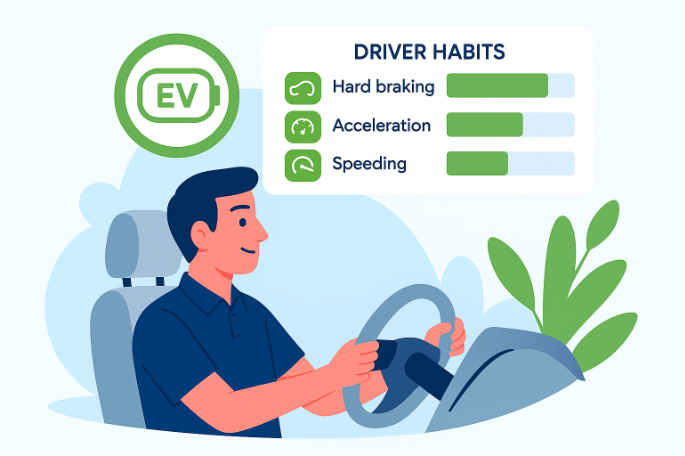
How a driver uses an EV can affect battery life. Hard braking, fast starts, or speeding waste energy. Telematics tracks these habits and gives reports. Managers can then offer tips or training to drivers, helping them drive smoother and go farther on a single charge.
Telematics does more than collect data. It gives fleet managers the tools to solve EV problems, cut costs, and plan smarter. It makes the transition to electric fleets faster and less risky.
How Data Can Guide a Smart EV Plan?
Switching to EVs is easier when you have the right data. Telematics collects data from your fleet and shows how to make the best plan.
- Knowing which vehicles to replace first: Not all vehicles are ready to become EVs. Telematics shows which ones drive short, regular routes and would work well as electric vehicles.
- Choosing the right EV models: The data tells how far vehicles travel each day. This helps pick EVs with the right battery size and range for the job.
- Planning charging times and places: Telematics shows where vehicles stop most often and for how long. This helps plan where to install chargers and when to charge so no time is wasted.
- Estimating costs and savings: Data on fuel use, maintenance, and mileage makes it easy to compare costs between fuel vehicles and EVs. This shows how much money a company can save each year.
- Predicting future needs: By looking at long-term trends, telematics can predict how the fleet will grow and what charging needs will be in the future. This helps companies avoid mistakes and plan for the next 3–5 years.
Data takes out the guesswork. Instead of guessing which EVs to buy or where to place chargers, managers can build a clear step-by-step plan backed by facts.
The Real Benefits of EV Telematics for Fleets and How Logifleet Can Help You Get Started Today
Telematics transforms electric fleet management. With real-time data, fleet managers always know what’s happening with every vehicle — from battery health to driver performance — allowing them to save costs, reduce downtime, and plan better.
- Lower Costs from Day One
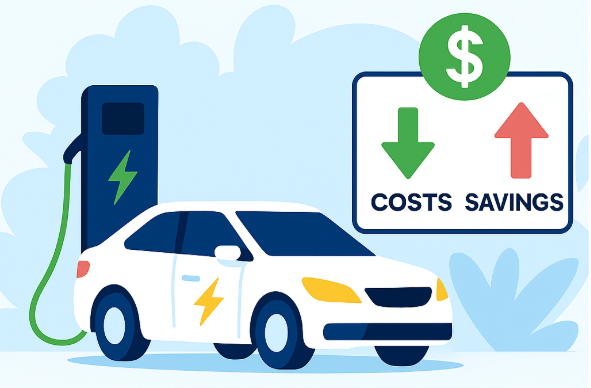
Fuel is one of the biggest expenses in a fleet. With EVs, you replace fuel with electricity, but costs still vary based on when and how you charge. Logifleet’s real-time data shows the exact energy use for each vehicle, the price of each charge, and where energy is being wasted. You can plan charging during cheaper off-peak hours and optimize routes to reduce unnecessary mileage. Over time, these small changes add up to thousands in yearly savings.
- Less Downtime, More Efficiency
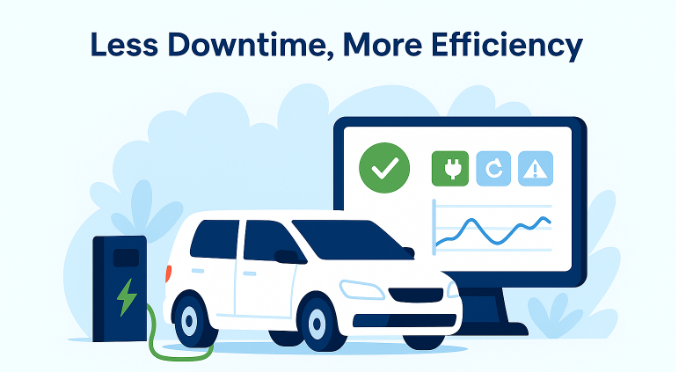
EVs need charging and maintenance just like fuel vehicles. Logifleet’s live dashboard shows battery levels, charging status, and vehicle health in real time. You’ll know which vehicles are ready for their next job and which ones need charging or a service check. This avoids last-minute surprises, missed deliveries, or delays. Our system can also send alerts if a battery is running low or if unusual energy use suggests a problem.
- Smarter Driver Performance
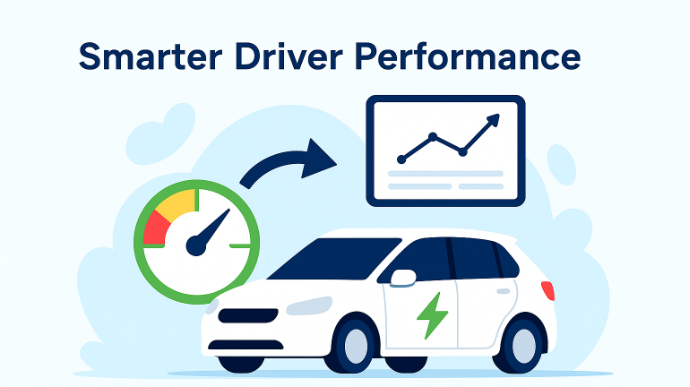
Driving habits directly affect EV range. Hard acceleration, speeding, or sudden braking drain the battery faster. Logifleet tracks driver behavior live and shows reports on energy-efficient driving. Managers can coach drivers to use smoother driving styles, which extends range and cuts costs. For example, even a 10% improvement in driving efficiency can add 30–50 km to a full charge.
- Data-Driven Growth and Planning
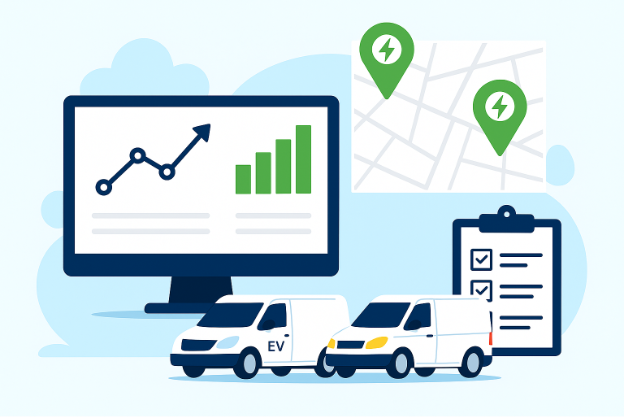
Switching to EVs works best with a clear roadmap. Logifleet’s historical data shows which routes and vehicles are most EV-friendly. You can see which vehicles travel short daily distances and can be replaced first. You can also see where chargers will be needed to cover all routes without downtime. With predictive data analysis, Logifleet helps you make smart decisions for future expansion of your EV fleet.
- Track and Share Your Green Impact
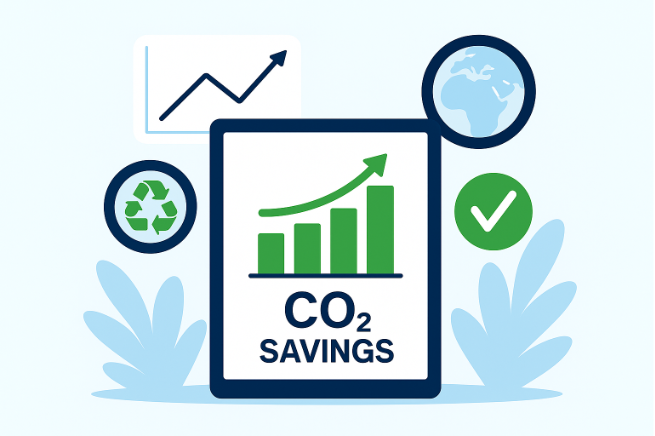
Sustainability is not just about saving money — it’s also about proving your impact. Logifleet automatically calculates CO₂ savings compared to fuel vehicles. You can generate reports for customers, partners, or internal teams to show how much your fleet is reducing emissions. This builds trust, strengthens your brand, and shows that your company is serious about going green.
Logifleet makes the move to EVs simple and smart. Our solutions combine real-time data, advanced analytics, and easy tools to guide you through every stage of your electric fleet journey.
Ready to see it in action?
Book a free demo today and find out how Logifleet can save you money and time while making your fleet greener.
En Budron H9
CH-1052 Le Mont s / Lausanne
T +41 21 651 06 51
Merkurstrasse 25
CH-8400 Winterthur
T +41 71 277 52 47